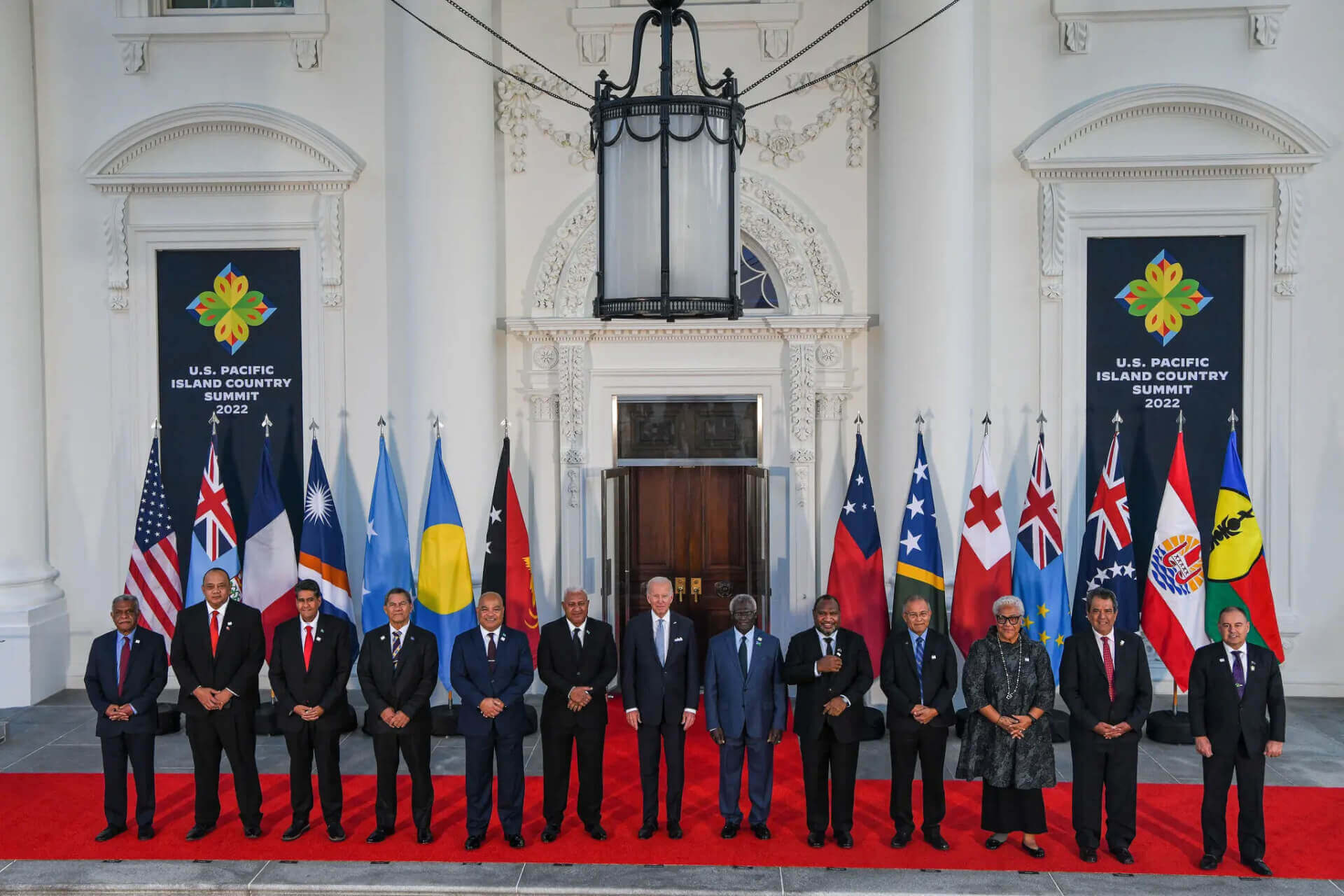In 2022, the Pacific Island Countries (PICs) have recently received a flurry of attention due to the official visits of US and Australian envoys, China's interest in signing security and fisheries agreements, and the of the conclusion of the US-Pacific Island Countries Summit in Washington.
During the summit, the leaders of 14 Pacific Island Countries (PICs) signed an 11-point declaration, vowing closer partnership with the US. However, upon closer scrutiny of US ties with the PICs exposes a more complex history of engagement.
Hesitancy in Cooperation with the US
Before the summit, the Solomon Islands refused to sign the declaration and attempted to persuade other pacific island leaders to do the same. In an official note, the government of the Solomon Islands asked for more time to study the declaration and parliamentary approval.
The Marshall Islands, too, participated in the summit but stepped away from negotiations on the bilateral Compact of Free Association (COFA), asking for compensation for the environmental damage inflicted by US nuclear testing in the country. This bilateral treaty has regulated US-Marshall relations for the past 30 years, but is going to expire in 2023.
The refusal of these two island countries on two separate agreements can be attributed to two reasons.
The first is the US’ dubious history of nuclear testing in the region. The US conducted 67 nuclear tests for 12 years (from 1946 to 1958). These atomic explosions continue to impact the health of the region’s Indigenous people. A UN Special Rapporteur confirmed this during a fact-finding mission to the island in 2012 and also pointed out its residual consequences on the surrounding ecology. Studies have shown that the degree of atomic pollution in the Marshall Islands is worse than that of Chornobyl and Fukushima.
The introduction of nuclear submarines into the Pacific under the recent AUKUS agreement has further aggrieved PICs. In an address to the 76th UN General Assembly, Solomon Islands Manasseh Sogavare said, “The Solomon Islands are a party to the 1985 South Pacific nuclear-free zone treaty; we, therefore, would like to keep our region nuclear-free and put the region’s nuclear legacy behind.” He further added, “We do not support any form of militarisation in our region that would threaten regional and international peace and stability.”
The second reason behind the growing divide with the US is Washington’s perceived negligence toward non-traditional threats in the region. For PICs, security has a broader meaning, which includes access to freshwater, coastal infrastructure, and addressing climate change. So far, the US has failed to put forth a framework to address these concerns.
Combined with the traumatic experience of nuclear horrors, PICs remain sceptical towards US presence in the region.
Growing ties with China
China has dramatically scaled up its aid and commercial activity in the region. According to its foreign ministry, two-way trade volume between China and PICs grew from $153 million to $5.3 billion between 1991 and 2021, a 30-fold increase.
Cooperation on environment and disaster management provides fertile ground for developing relations between China and the PICs. In 2017, China hosted the China-Small Island States Ocean-related Ministerial Round Table. The key topic for discussion was the “Blue Economy and Ecological Islands.” Senior delegates from Samoa, Fiji, Vanuatu, and Niue participated.
Furthermore, in contrast to the US, China has hosted three South-South cooperation training sessions for PICs on “Tackling Climate Change for Green and Low-carbon Development” since 2019. The China-Pacific Island Countries Climate Change Cooperation Centre was established in China’s Shandong Province in April 2022.
Chinese engagement in education, tourism, agriculture and fishery, and health has also increased over the last decade. Chinese infrastructure projects, too, cater to PIC’s unique requirements.
US-China Rivalry: an opportunity for PICs
Climate change and increasing sea levels severely threaten the survival of PICs, for whom non-traditional threats have greater salience than traditional threats. Due to their material size and sparse populations, PICs have negligible negotiating leverage in world affairs. They are, therefore, likely to use the US-China rivalry to their advantage and leverage their geographical position to exact greater concessions on tackling climate change.
For the US and China to negotiate their traditional security concerns, they will have to take seriously the non-traditional security threats to the PICs. It is in the act of balancing the influence of the two superpowers in the region that the PICs will be able to maximise their interests and influence.
Pacific Island Countries and the US-China Rivalry
Due to the US’ nuclear history in the region as well as its lack of climate financing, Pacific Island countries remain sceptical of US presence in the region and are expanding ties with China.
December 6, 2022

US President Joe Biden with Pacific Island leaders in Washington, Sept 2022 IMAGE SOURCE: KENNY HOLSTON/NEW YORK TIMES
